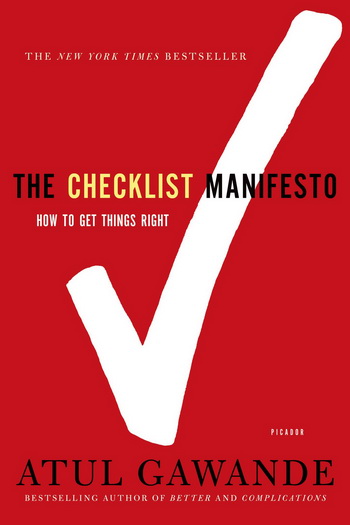Atal Gawande wrote in 2008 a thesis on the need for checklists in hospital emergency centers. His idea was that deadly mistakes were made not because people were not trained but because people didn’t apply rigorously what they know.
The thesis became the basis of the book “The Checklist Manifesto“
Although the focus of Gawanade is the medical field, the knowledge can be expanded to other fields as well.
A good overview on the lessons learned you can find under: http://www.everup.com/2016/01/25/about-the-checklist-manifesto-atul-gawande-takeaways/
Some takeaways:
- Checklists are used by successful people to eliminate mistakes.
- Checklists are not step-by-step procedures and must be kept short
- The activities must be described in a clear language that does not allow for any interpretation by the user of the checklist
- Checklists must contain milestones. These are the places where checks can be stopped and the list activities can be taken up again.
- The proof of the pudding is in the eating. Checklists must be reevaluated regularly. Revise after feed-back cycles.
- Involve experts in user experience design to optimize layout and formatting of the checklist.

